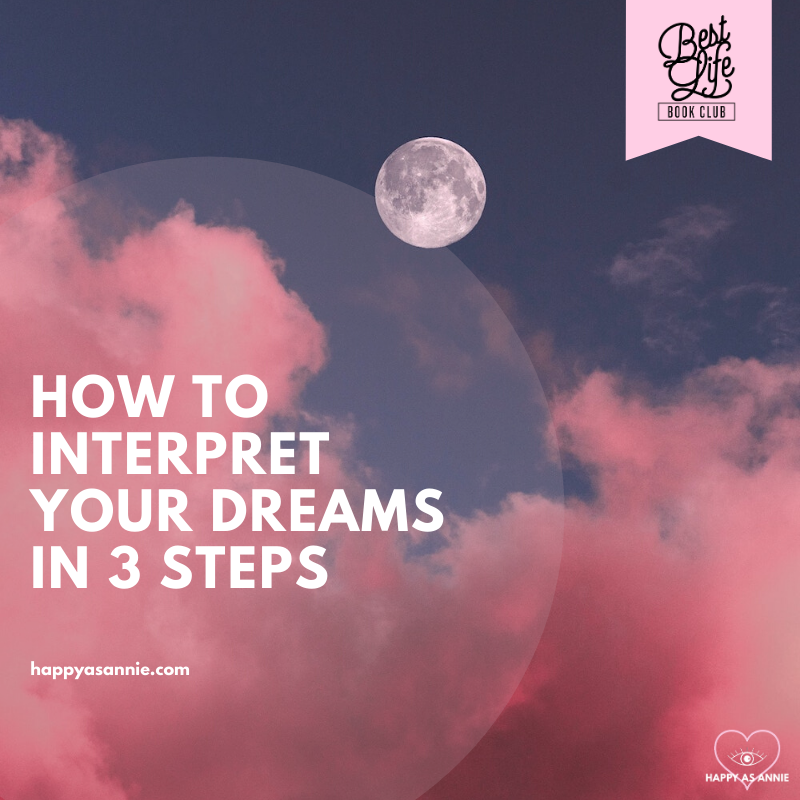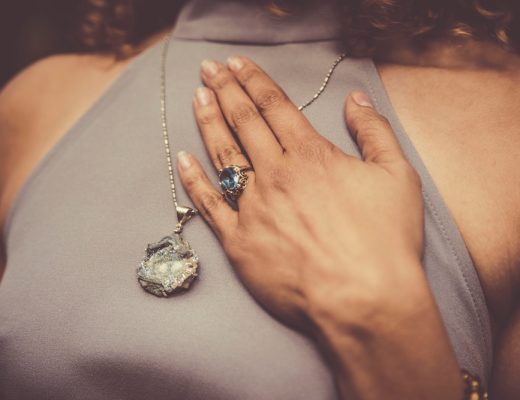
[I am a proud affiliate of Bookshop.org and this post may contain affiliate links to some of my favorite books. This means that I may earn a small commission at no extra cost to you if you follow one of my links and make a Bookshop.org purchase.]
When you start paying more attention to your intuition, your intuition will speak to you more and more. One way your intuition sends you messages is through dreams. So how do we interpret these dream messages?
I could never really make sense of my dreams before I read Steering by Starlight by Martha Beck. She lays out a three-step process for how to interpret your dreams, and it works!
Our intuition uses our dreams to communicate with us.
Our conscious mind is run by our ego, while our intuition resides mostly in our subconscious. While we are awake, it’s often hard to hear our intuition. Why? Because everyday distractions, insecurities, pressures, and limiting beliefs get in the way.
To avoid all this static and distortion, our intuition comes up with clever ways to get in touch with us. One of those ways is through our nightly dreams. It’s brilliant if you think about it. Our intuition waits for the ego to fall asleep and finally shut the hell up, and then it seizes its chance!
According to author and life coach Martha Beck, our inner Stargazer knows our destiny and the path toward our highest good. It uses our dreams to give us mini maps of where to go and what to do in life. If we ignore our dreams, especially particularly memorable, disturbing, or recurring ones, we are running the risk of ignoring divine guidance from our higher selves.
Our job, then, becomes learning how to interpret our dreams and decode these intuitive messages. It’s all very The Da Vinci Code!
Why are dreams so jumbled and nonsensical then?
The only problem is that our intuition and our ego see the world quite differently, and the messages are often lost in translation. That’s why we so often wake up after a dream and it makes no sense to us:
“I was in a house that I’ve never seen before, but it was supposed to be my parents’ house. There was a giant black cat chasing me through the house! It was, like, six feet tall! Or maybe it was Mickey Mouse, and not a cat. I finally locked it in the bathroom when my husband showed up at the front door, except we weren’t married in the dream…”
The dream message hardly makes sense because we are trying to “read” it intellectually, using our conscious awareness. To understand and interpret our dreams though, we need to analyze them from the perspective of our intuitive, inner Stargazer, to use Martha Beck’s term from Steering by Starlight.
So how do we decode and interpret our dreams?
Step 1: Write down your dream in detail.
First thing’s first: Write down your dream as soon as you wake up from it. It is most helpful to keep a notebook or your phone near your bed so that you can jot down the dream in as much detail as possible as quickly as you can.
I have on more occasions than I would like to admit been too tired to do this, trusting that the dream was so interesting or scary or juicy that I would surely remember it when I woke up for real in the morning. And you can guess how well that works.
Here’s an important tip though: Write down everything that stands out to you, no matter how weird, minor, or literal you think it is. In fact, the dream description above is an actual excerpt from my dream journal.
Step 2: Figure out the role each detail of the dream plays.
Now that you have recorded everything from your dream, you can go back to sleep or go through your morning routine or whatever you need to do. Come back to the dream when you are ready, but preferably at some point that following day so you don’t forget the essence and feelings those details elicited.
To interpret your dreams, you must now figure out the role each detail of your dream plays in the message your intuition wants to give you. What I do first is go through and highlight each potential symbol in my dream. In the dream I included above, those symbols would be:
- parents’ house
- giant black cat
- Mickey Mouse
- bathroom
- husband/boyfriend
To figure out what each symbol represents in this message, Martha Beck advises us to “become the symbol; think, act, and express yourself as the symbol, not the dreamer.”
Let’s take two of the details in my dream as examples and go through Martha Beck’s script so you can get a feel for how interpreting a dream works.
Example 1: The giant black cat
If I tried to read this symbol from my own conscious awareness, I might say something like, “I don’t particularly like cats. Black cats are supposedly unlucky. Great, I’m going to encounter bad luck!” That would be inaccurate though, because our intuition speaks a different language, a language of divine guidance and love. So, to translate the symbol from the symbol’s perspective, try a script like, “I am the giant black cat in Annie’s dream. I am here to represent ______, or, I help Annie by _______.”
Your intuition sorts through your recent memories and stuff that’s already on your mind to use as code. That’s why Keanu Reeves was in my dream after I watched The Matrix on Netflix, or why I had a student named Sofia in a dream after I spent all afternoon reading the fashion blog of a French girl named Sofie.
So, I started to think of where I had recently seen a black cat and why it might have crept into my dream. I remembered that I had pulled the Queen of Wands in a tarot reading the day before. That card is a bright yellow card with a social butterfly queen on it, full of sunshine and infectious charm. But at her feet is a freaked out black cat, like a spilled blob of ink ruining an otherwise pretty picture. What does that cat represent? I remember deciding that the black cat represented the Queen’s shadow side. Her fears, insecurities, childhood traumas, etc.
Following Martha Beck’s suggested script, I thought out loud: “I am the giant black cat. I am here to represent the shadow side of every queen. Nobody is perfect. I am here to represent fear and depression. I am Annie’s depression!”
In fact, when I had this dream, I was battling an onset of depression that was pretty overpowering. I was feeling really alone and embarrassed and weak about it, and I was pissed that it was back to ruin my life! I was working hard to put together this life that looked great on the outside, and I was afraid that my depression would ruin it. In fact, that’s why the black cat was so giant in my dream! It represented my depression, which felt giant, so the cat had to be giant too!
Example 2: The bathroom
Again, I had to put myself in the place of the bathroom to understand its symbolism. I followed the same script: “I am a bathroom. I am the bathroom–the only bathroom in the house. Hey, I only have one bathroom in my apartment in real life! It’s actually the most annoying part of our living situation and I think about it often. Why is it annoying? Because I want privacy and space to poop as I please. I mean, honestly, my biggest fear is both of us having food poisoning at the same time, Bridesmaids-style. What would we do in that situation!?”
And there it was. A bathroom is the one place you are guaranteed to have alone time. So the bathroom represented privacy and a space for myself, hidden away from my husband and everyone else.
Step 3: Rewrite the dream substituting the new meanings for each symbol.
Once you have all the symbols in the dream matched up with an underlying meaning, rewrite the dream narrative using the new meanings instead of the symbols. So, I would rewrite my dream replacing each instance of “giant black cat” with “my depression.” I would replace “the bathroom” with “privacy and a hiding place.”
Here’s what the dream description we started out with transformed into:
“I’m in a new identity, trying to make it feel safe and secure. But my depression is back and unsettling me. Is it my depression, or is it childhood traumas I am repressing? Whatever, I just have to get rid of it so no one sees it. I will lock it up in my private thoughts and hide it away because I’m not sure how to deal with it. That way, my friends and family won’t have to deal with it either and get uncomfortable and awkward…”
In my dream, I had locked the black cat in the bathroom. My intuition wanted me to recognize that I was hiding my depression. What’s more, the dream felt ridiculous and kind of slap-stick, like I Love Lucy stuffing a giant cat into the bathroom with Ethel and then opening the front door to Ricky like nothing was wrong. My intuition was trying to show me how silly I was being about my depression. What are you doing? Tell your family what you’re going through! Don’t put up a facade of perfection on social media–find connection and provide support for others who may be feeling the same way. Look for a therapist!
WOW! Right?
I’m telling you. To interpret your dreams is to do magic.
Not all dreams give you clear answers and solutions.
This particular dream was a nice example to use as an illustration. But others don’t necessarily provide a clear path to follow. Sometimes, my dreams will say something like, “Hey, you’re really anxious about this upcoming event. You thought you weren’t, but here I am telling you that you are.” And you’re just like, ‘Gee, thanks?”
There’s no clear solution in a dream like that, but perhaps your intuition wants to make sure you are connecting with your feelings and processing your emotions properly.
And sometimes I have no idea what a dream means because I am too overwhelmed and out of alignment that week to figure it out. Nobody’s perfect.
Finally, everyone’s dream messages will look a little different because we are all so vastly different, especially in the recesses of our minds. I think Martha Beck’s basic three-step process is a great framework to get you started in dream analysis and interpretation.
Wait, why can’t I just look things up in a dream dictionary?
To this common question, I will first respond with, “You can! You can do whatever your heart desires.” My dream dictionary from Barnes & Noble was my most prized possession growing up.
However, I have found from experience that the symbols in our dreams are our personal intuition’s way of talking to our unique conscious awareness. There’s no way a symbol means the same thing to me, you, Heather from downstairs, and Brianne from English class. My husband had a dream about the Dodgers pitcher Clayton Kershaw one night, and we realized it represented his dad. There’s no way Clayton Kershaw represents everyone’s father!
My friend Meghan, for instance, might dream about snakes and they might represent her children. This is because she is edgy and fierce and her beloved pet snake was her baby until she had her two boys. There is no way in hell (well, maybe in hell) you are looking up “snake” in a dream dictionary and seeing “your beloved children.”
Dream dictionaries are fun and an interesting way to learn about how symbols enter into the collective consciousness of a society or people. I’m just not sure they are the most accurate tool to help you interpret your dreams. My point is that you have a far richer and customized trove of knowledge in your own brain.
How do you interpret your dreams? Let me know in the comments below!










5 Comments
Wonderful post, Annie! I love interpreting my dreams but I normally use a dream dictionary or online search. Such a great point that dream symbolism is different for all of us! I will definitely think about that next time I wake up from some crazy dream. Thank you for sharing!
Thanks for reading, Julianne! 🙂
Such an interesting post! I love interpreting my dreams.
Thanks for reading, Stephanie!
[…] In fact, click here for a step-by-step guide to interpreting your intuitive dreams. […]